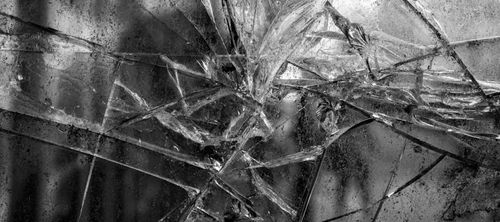The Legacy of Ethnic Violence in Kenya and Rwanda

At the end of 2007, the outbreak of ethnic violence in Kenya cost 1,100 lives and hundreds of thousands of people were displaced. During the genocide in Rwanda in 1994, 800,000 people were murdered in just 100 days. In this program, we examine the legacy of this ethnic violence in Kenya and Rwanda, looking at the impact of impunity and the possibilities for reconciliation.
After the violence in Kenya, justice for the victims seemed within reach for a long time. Unfortunately, things turned out differently. The International Criminal Court was forced to drop its case after witnesses were bribed, intimidated, and even murdered. One of the main suspects, William Ruto, is now the president of Kenya.
Marnix de Bruyne, writer and Africa journalist, traces in his new book Als een slang je bijt, blijf je altijd bang the stories of Kenyans who experienced the violence firsthand or witnessed it. How does one live with neighbors who looted, stole cattle, burned houses, or worse — and were never punished for it? For the photo book Bloedbanden. Verzoening na de genocide in Rwanda, photographer Jan Banning and author Dick Wittenberg spent a month photographing and interviewing former enemies who found reconciliation. This evening, inspired by these two books, we reflect on the legacy of ethnic violence in Kenya and Rwanda.
About the speakers
More speakers t.b.a.
Marnix de Bruyne was correspondent in South Africa for amongst others Het Parool and Business Nieuws Radio (BNR). From 2007-2011 he worked at the foreign desk of de Volkskrant, writing about Africa. In 2010 he published Het land van Soekmekaar, about how a rural village experiences the growing pains of the new South Africa. Currently he is parttime editor at the national daily NRC Handelsblad.Oyunga Pala’s mission is to use his writing to make a contribution towards transformative change in society by making an honest investigation of the human condition. He remains one of the most impactful, Kenyan columnists of his generation. His work explores the boundaries between the extreme and the everyday, while deliberately challenging stereotypes of African ‘Otherness’, Oyunga remaps the African world beyond its geographical boundaries. Jan Banning is a Dutch independent photographic artist, based in Utrecht, the Netherlands. He was born in Almelo on May 4, 1954, from Dutch East Indies parents, and he studied social and economic history at the Radboud University of Nijmegen. Both of these facts have had a strong influence on his photographic works. His roots are reflected in several of his subjects, such as in ‘Comfort Women’: Indonesian women who were forced to serve as sex slaves for the Japanese military during the Second World War; also in ‘Traces of War: Survivors of the Burma and Sumatra Railways.’Dick Wittenberg is a journalist, writer, and master storyteller of great tales about everyday events. His work for NRC Handelsblad has received numerous awards, and he now writes for De Correspondent. In 2008, together with Jan Banning, he won the Bob den Uyl Prize for Binnen is het donker, buiten is het licht. Bloedbanden. Verzoening na de genocide in Rwanda is his most recent book.Pieter van Os (moderator) is a Dutch writer and journalist. His published works include non-fiction books on a wide variety of subjects, including religion, war, political journalism, art and football. In 2020, he won the Brusse Prize for best journalistic book in the Dutch language with Liever dier dan mens. For the same book, Van Os won the prestigious Dutch Libris History Prize.